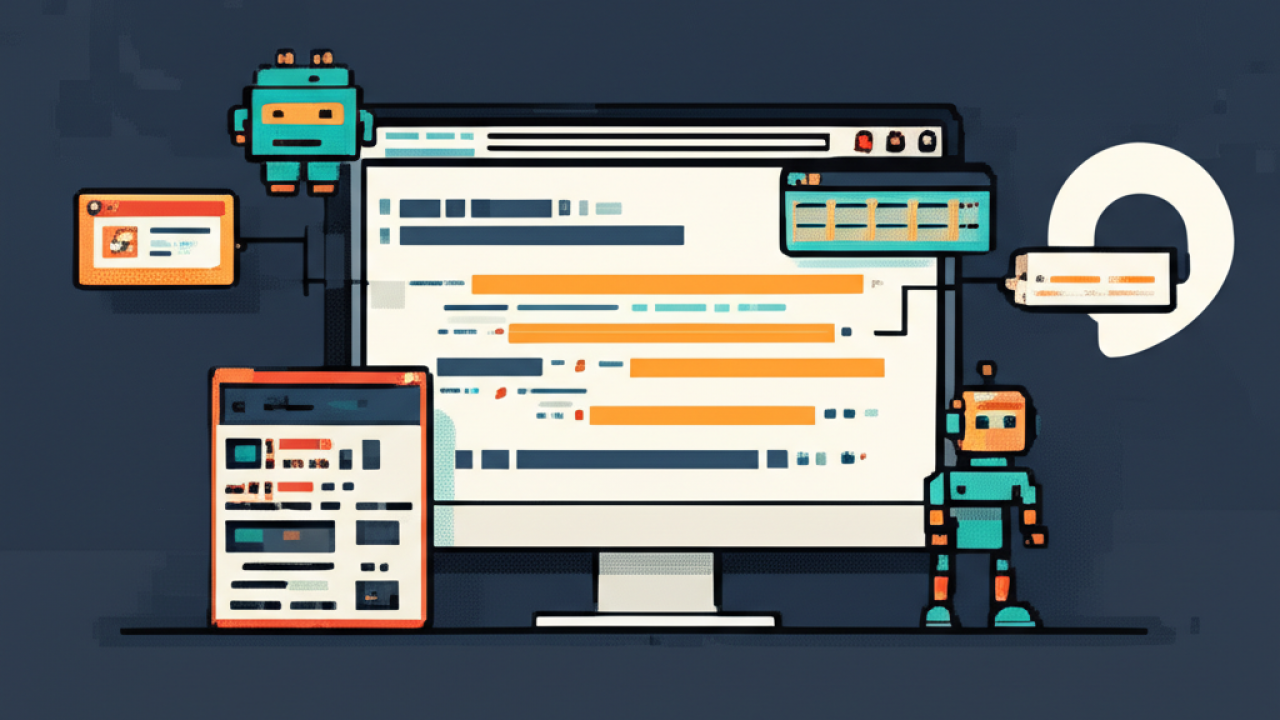Let’s be honest. We have all seen a giant pull request get a quick “LGTM” and felt a chill down the spine. The reality of software development is that PR queues are a bottleneck. Code review, although crucial for quality, is usually slow, inconsistent, and mentally exhausting. It is the classic tug of war between shipping fast and shipping with quality. But what if we could have the best of both worlds? The rise of AI Code Review on GitHub is beginning.
The idea is not to replace developers, but to empower them. It is about automating the boring and error-prone parts of code review so humans can focus on what they do best: architecture, logic, and the big picture of the project.
The PR Bottleneck We All Know (and Hate)
The traditional code review process is familiar to all of us. You push your branch, open a pull request and then… wait. Maybe you will get quick feedback. But most likely your PR will sit for a day while your teammates are buried in their own work.
When the review finally arrives, the result is unpredictable:
- The Perfectionist: Points out a missing semicolon or a line that is too long. Is it important? Yes, but does it really need senior engineering time?
- The Overloaded Reviewer: Has 10 PRs in the queue and only skims through your code. They miss that subtle logic bug you expected a second pair of eyes to catch.
- The Inconsistent Feedback: One reviewer wants you to use map, another prefers a for loop. Standards end up depending on who reviews your code that day.
This process is slow, creates friction, and burns valuable developer energy on tasks that are frankly below their capacity.
The AI Copilot for Your Pull Requests
AI code review tools integrate directly with GitHub. When you open a PR, a bot jumps in and performs the first analysis for you. It is like having an endlessly patient and incredibly fast developer on your team who has memorized every style guide and security manual ever written.
It leaves comments directly in the diff, just like a human reviewer. But instead of taking hours or days, it takes minutes.
What Does an AI Code Review Tool Look For on GitHub?
These tools are not just sophisticated linters. They combine several types of analysis to give you a complete view of your code’s health.
- Static Code Analysis: This is the basics. The AI looks for common bugs, possible null pointer exceptions, unused variables, and logic errors without needing to run the code.
- Style and Formatting: The bot applies your team’s style guide with relentless consistency. No more endless debates about brace positions or line lengths in PR comments.
- Performance Hotspots: Some tools can detect inefficient code, like an N+1 query inside a loop, and suggest higher-performing alternatives.
- Security Vulnerabilities: This is crucial. AI is trained to recognize common security flaws such as SQL injection, cross-site scripting (XSS), and the use of unsafe dependencies. It is your first line of defense.
- Best Practices: It can recommend modern language features, suggest refactoring opportunities, or point out when you are reinventing the wheel with something that already exists in the standard library.
In short: the goal is to clean up 80 percent of the noise before a human even looks at the PR. This frees senior developers to focus on the 20 percent that really matters: business logic, user experience, and the architectural integrity of the change.
AI Tools for Code Review on GitHub
The market for these tools is exploding, but they generally fall into two categories: closed-source SaaS products and open-source platforms you can host yourself. The choice you make has big implications for cost, control, and data privacy.
Kody from Kodus
Kody is built on a foundation of transparency and control, something often missing from AI tools.
Kody is an open-source AI code review tool that runs directly on your Git platform (GitHub, GitLab, Bitbucket, or Azure DevOps).
- Bring Your Own Key (BYOK): This changes the game. Kody does not lock you into a specific language model. You can use your own API key for whichever model you prefer, OpenAI, Claude, Gemini, or even open-source models.
- Custom Rules (Kody Rules): Generic “best practices” are useful, but every team has its own context. With Kody Rules, you can teach the AI your team’s conventions, architecture patterns, and even business rules. For example, you could create a rule saying: “Flag any new PR that adds a dependency to a deprecated internal library.”
- Deep Workflow Integration: Integrate Jira, Notion, or Linear so Kody can understand specs, tasks, and requirements while reviewing your code.
This way, it not only looks at the PR, but also at the real context of what needs to be delivered, validating business rules, checking criteria, and ensuring the code aligns with what was requested.
In short, Kody is for teams that do not want a black box. It is for teams that want to shape their AI assistant into a genuine workflow member who is aware of the context.
A Quick Look at the Alternatives
Kody is not the only one on the market, of course. Here is how it compares with a few other tools:
- Sweep: Sweep takes a different approach. It takes a GitHub issue and tries to write the code to solve it. It is less a reviewer and more an executor, which is a fascinating but different paradigm.
- Qodo: Although Qodo offers PR review features, its strong point is generating meaningful tests for your code. It is fantastic for increasing test coverage and ensuring your changes are well tested before reaching review.
- Aider: This is a command-line tool that brings AI pair programming directly into your terminal. It is highly interactive and great for developers who want a programming partner to talk to while coding, but it does not automate the PR review process in the same way.
Ready to Try It Out?
Adopting AI code review is one of the highest-impact changes a development team can make today. It directly affects speed, quality, and developer satisfaction. If you are tired of PR bottlenecks and want to give your team back the most valuable resource there is, it is time to bring AI into your workflow.
Your Action Plan:
- Start the Conversation: Share this with your team. Is the pain of slow code reviews something everyone feels?
- Choose a Pilot Project: Select a non-critical repository to test. Do not implement everything at once.
- Test a Tool: Start with an open-source option like Kody to get a feel for the setup and the control it offers. The barrier to entry is low and you will learn a lot.
- Measure the Impact: Track a few key metrics before and after: PR approval time, number of comments before merge, and number of bugs caught by the bot versus humans.
- Listen and Iterate: Ask your team for feedback. Is the AI helping? Is it generating too much noise? Adjust the rules and expand use when you feel confident about the value it is delivering.



